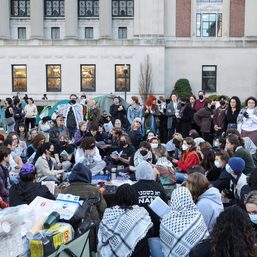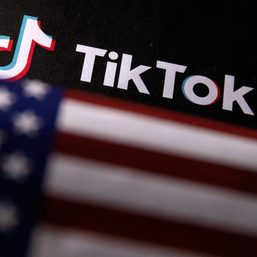SUMMARY
This is AI generated summarization, which may have errors. For context, always refer to the full article.

WISCONSIN, USA – Travel brochures in Sheboygan, Wisconsin, tout the town’s beaches on Lake Michigan as the Malibu of the Midwest. But pages of glossy photos leave out a feature of the landscape: a coal-fired power plant on the shore that will remain open until mid-2025 instead of closing this year as planned.
Alliant Energy Corporation’s Edgewater coal-fired plant in Sheboygan is one of at least six across the country that this summer have announced delays or potential delays to their planned closures, citing concerns about energy shortages.
A key culprit: renewable energy deployment, which was meant to replace these coal plants, has taken a hit in recent months because of COVID-19-related supply chain hiccups. Utilities say import tariffs on solar panels imposed by the US Department of Commerce make it hard to keep up with robust power demand.
In addition to the closure delay of its 400-megawatt (MW) Edgewater plant in Sheboygan, Alliant’s 1.1-gigawatt Columbia Energy Center in Portage will close by June 2026, a delay of about 18 months.
WEC Energy Group has delayed the closure of remaining units at its 1,135-MW Oak Creek power plant near Milwaukee for up to 18 months until May 2024 and late 2025.
Indiana’s NiSource blamed solar project delays of up to 18 months for its postponing the shutdown of the 877-MW Schahfer coal plant for two years until 2025.
In Nebraska, the board of the Omaha Public Power District will vote on August 18 on whether to keep the 645-MW North Omaha plant open until 2026, a delay of up to three years, due to siting delays and backlogs in studies in switching to natural gas and solar.
And in New Mexico, PNM Resources delayed the closure of a unit at the San Juan plant by three months until September, as drought threatened hydropower supplies and heat boosted power demand.
When burned, coal emits more of the greenhouse gas carbon dioxide than any other fossil fuel. It also releases nitrogen oxide and sulfur dioxide, precursors to haze and smog that harm human lungs and hearts.
All of the companies said that despite the delays, and potential delays, they will meet their long-term voluntary goals on carbon emissions and that scrubbers and other pollution devices have removed most of the criteria pollutants of their emissions.
Holly Bender, a senior director of energy campaigns at the Sierra Club environmental group, said the delays do not portend a resurgence in coal use. Nearly 360 US coal plants have shut or plan to shut in recent years, compared with about 170 plants that remain active, according to the organization.
Rather, Bender said, the delays serve a “warning sign of the failure to plan for the kind of clean energy growth that is needed.”
President Joe Biden’s goals of cutting US carbon emissions 50% by 2030 from 2005 levels and decarbonizing the power sector by 2035 will likely depend on even more shutdowns of coal plants.
Biden’s emissions plan will get a lift if the US House, as expected, follows the Senate to pass the Inflation Reduction Act, which analysts say will cut emissions about 40% by 2030 by giving market certainty on hundreds of billions of dollars in clean energy tax credits and incentives.
The US coal industry has been slammed by a surge of cheap natural gas, declining prices for renewables, and regulations cracking down on pollution that causes direct health issues and threatened ones on carbon dioxide. Coal generated about 20% of US electricity last year, down from about 50% in 2006.
But cutting emissions further will not be easy.
“It’s imperative that we increase accountability on utilities, regulators, and planners to ensure…the transformation of our power sector off coal,” Bender said.
Not helping the problem
Estimating the health effects of coal plant emissions on people in exact areas is difficult as their high smokestacks disperse pollution into the wind. Pollution from vehicles and industry also harm air quality.
Still, like many densely populated, industrial US areas, parts of Sheboygan county have been out of compliance for revised US ozone standards since 2018, while all of Milwaukee county has been out of compliance since then, according to the federal Environmental Protection Agency.
And coal plants, even if they are in areas that are in compliance with federal standards, can contribute to health problems, said Tracey Hollaway, an air quality scientist at University of Wisconsin, Madison.
“It’s still affecting the air of people far downwind,” she said about the delays. “Keeping these facilities open is not helping the problem.”
It is an open question whether the delays are a harbinger of more to come. But coal market players see at least temporary opportunities.
Joe Craft, the chief executive of Alliance Resource Partners, the third largest US coal producer, told analysts this month that plants staying open is “going to bode well for us.”
Strength in US and European coal markets should drive Alliance’s year-over-year margin growth from now through 2024, Craft said.
Ted O’Brien, managing partner and chief commercial officer at Oluma Resources, a Pittsburgh-based marketer of the fuel, said nobody believes coal plants will stay open in perpetuity, but the delays could at least extend the life of mines.
“Maybe this does give coal staying power to maintain its corner in the broader US energy mix,” O’Brien said. – Rappler.com
Add a comment
How does this make you feel?





There are no comments yet. Add your comment to start the conversation.